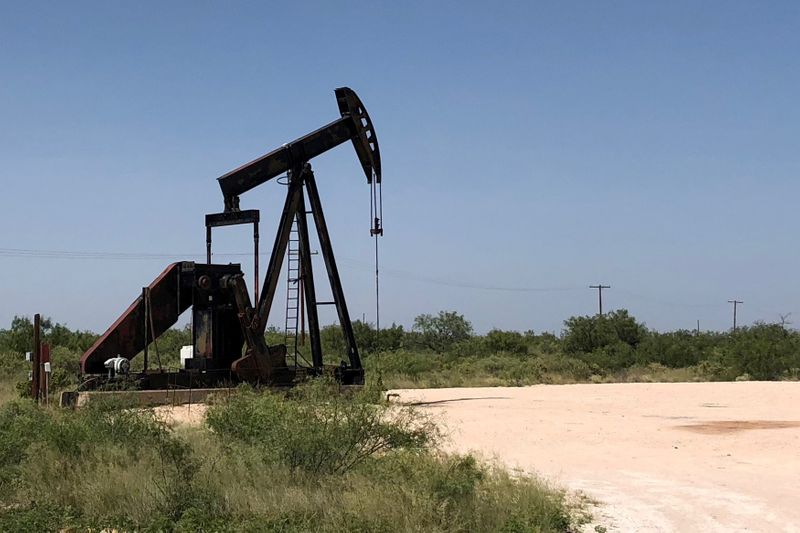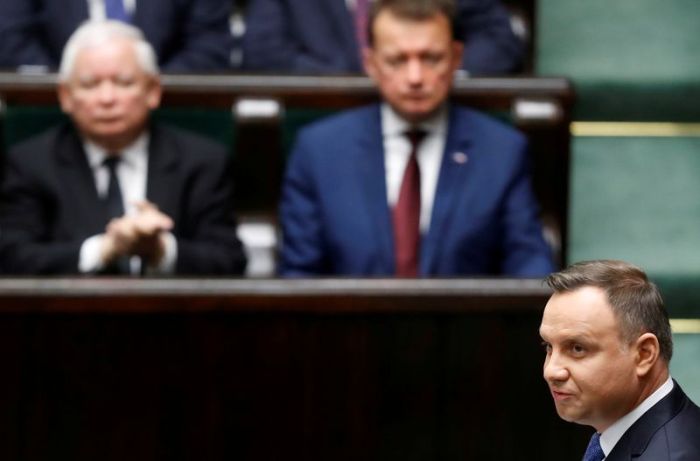NEW YORK (Reuters) – Oil soared on Thursday, extending its rebound after major oil-producing nations said they would accelerate planned production cuts to combat the dramatic slump in demand due to the COVID-19 pandemic.
Crude prices have had one of their most tumultuous weeks ever. U.S. West Texas Intermediate crude futures (WTI) <CLc1> closed at negative $37.63 a barrel on Monday, in the worst sell-off for that contract in history. Global benchmark Brent crude <LCOc1> was slammed on Tuesday, hitting a two-decade low before rebounding.
Since the start of the year both benchmarks have lost more than two-thirds of their value. Fuel demand is down about 30% worldwide in April and supply will outstrip demand for months to come due to the pandemic.
Brent rose 96 cents, or 4.7%, to settle at $21.33 a barrel, while WTI jumped $2.72, or 19.7%, to settle at $16.50.
“We are seeing a real reaction within the U.S. industry to these super low prices and that is creating some green shoots that is allowing prices to rebound a bit,” said John Kilduff, partner at hedge fund Again Capital LLC in New York. “But it is still hard to get excited about prices just above $15 a barrel.”
He was referring to the decline in U.S. oil rigs to their lowest since 2016 and a 100,000 barrel per day (bpd) drop in U.S. crude output last week to 12.2 million bpd.
The Organization of the Petroleum Exporting Countries and other oil producing nations, a grouping known as OPEC+, agreed this month to cut output by a record 9.7 million bpd, around 10% of global supply, to support oil prices, but prices continued to decline.
Kuwait said on Thursday it had begun cutting oil supply to the international market, ahead of the May 1 date when the deal was supposed to take effect.
Whether that will be sufficient to offset weak demand is unclear. Rystad Energy cut its forecast for oil demand in 2020 to 89.2 million bpd, a 10% decline from 2019. Last week, the energy consultant projected demand would fall to 90.3 million bpd in 2020.
Russia is looking for options to cut its production and may go as far as burning its own oil, sources said. Its production has not changed much from March until now.
(GRAPHIC: Cushing crude stockpiles surge – https://fingfx.thomsonreuters.com/gfx/ce/rlgvdybepoj/cushing%20storage.PNG)
The market was also higher after U.S. President Donald Trump said he had instructed the U.S. Navy to fire on any Iranian ships that harass it in the Gulf, although he added later he was not changing the military’s rules of engagement.
The head of Iran’s Revolutionary Guards said Tehran will destroy U.S. warships if its security is threatened in the Gulf.
“This ratchets up tensions once again between the U.S. and Iran. However, given the glut we have in the oil market, it is difficult to see this offering lasting support to the market, unless the situation does escalate further,” ING’s head of commodities strategy Warren Patterson said.
(GRAPHIC: OPEC’s share of India’s crude oil imports falls to record low – https://fingfx.thomsonreuters.com/gfx/ce/xlbpgqogpqd/IndiaOPECApril2020.png)
(Additional reporting by Bozorgmehr Sharafedin in London and Aaron Sheldrick in Tokyo; Editing by Marguerita Choy, Barbara Lewis and Tom Brown)
























